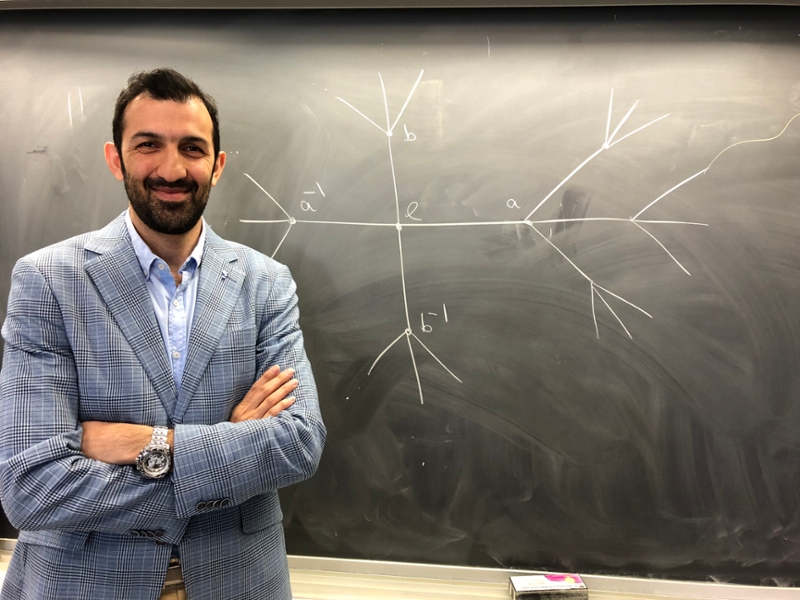Celebrating the Science of Randomness
By Tom PorterVisiting Assistant Professor Behrang Forghani’s area of expertise is the science of randomness. But there’s nothing random about the mathematician’s recent success in securing a $30,000 grant from the National Science Foundation to organize an international conference on the subject.
The conference, called "Boundaries of Random Walks and Applications," brings some of the world’s top mathematicians to the Bowdoin campus June 4-6, 2019, and is the result of much effort by Forghani and his colleagues.
Forghani shares his thoughts on the project, its implications, and what it means to be an Iranian academic in the US at the moment.

What does this award mean to you, personally and professionally?
It feels amazing (I suggest you accept an award whenever you have the chance!) It is tremendously gratifying to be recognized for the hard work that my colleagues and I have done. It also confirmed our vision and attitude toward our research.
We are walking (not randomly) on the right path, and I am very excited about the conference. Recently, there have been some breakthroughs in the field of random walks, and this award enables us to bring great mathematicians in the community of random walks together to discuss and exchange new cutting-edge results.
What are random walks?
They’re related to the theory of randomness, which we deal with in daily life. Imagine you play a board game with two dice like backgammon. Each time you roll two dice, the numbers that appear are examples of a random event. Or when you play a card game like poker, the set of five cards that you receive from the dealer is a random event.
Or, to move away from the gaming analogy, consider the movements of some species in a particular region, like moose in Baxter State Park for example. Another example is the movement of bacteria.
In all of these examples, you might be curious about the long-term behavior of these phenomena and ask yourself questions like: How much do bacteria move on average?
As mathematicians, we search for the common pattern in all these phenomena and study all of them in a unified abstract way. The conference is devoted to studying the probabilistic aspects of random movements on objects that might have some geometrical or combinatorial structures.
You’re originally from Iran. How did you end up at Bowdoin?
I left Iran in 2008 to do a PhD in functional analysis at an international university in Germany. I left my comfort zone and explored new courses, which led me to work with Professor V. Kaimanovich, one of the prominent figures in the theory of random walks. He decided to move to Canada, so I followed him and received my PhD there. From there I went to Connecticut for my postdoc, and now I am excited to be part of Bowdoin’s diverse community. You could say I have been, globally speaking, something of a random walker myself!
Given the strained diplomatic relations between Iran and the US at the moment, how difficult is it to maintain links, academic or otherwise, to your home country?
My parents and siblings still live in Iran, and I have traveled back home twice since I left. I have also been lucky that my parents were able to visit me once in Canada and once in the US. Developments in technology allow me to keep in daily contact with my family, but the complex, unpredictable visa process for Iranians and the travel ban mean I probably can’t see them for the foreseeable future.
At the same time, to not be able to see my family easily and frequently makes me stronger and motivates me to focus on my professional life. I hope there will be a time that geographical boundaries vanish and the whole universe can live in peace.



